A Caribbean ‘Cow’ Tooth Could Solve the Mystery of the Chincoteague Ponies
A surprise discovery from Haiti may finally reveal how some famous feral horses got to a distant barrier island.
On the north coast of the island of Hispaniola, between rugged mountains and the Caribbean Sea, there is a wide stretch of grassland. Today, this area of Haiti is known as the Plaine-du-Nord, but it is dotted with archaeological sites that chronicle millennia of indigenous Taíno settlements and, more recently, Spanish and French colonization. On its northern edge, close to where the plain meets the surf, a small farm sits atop what was once Puerto Real.
For three-quarters of the 16th century, Puerto Real was a bustling cattle town with a dark story: Built on conquest, operated through exploitation and lawlessness, it was ultimately destroyed by the very government that had founded it. What remained of its grand stone church, plaza, and scores of homes fell into ruin, rediscovered only in 1975 by an amateur archaeologist. Extensive excavations in the following decades revealed it was one of the largest Spanish sites in the Caribbean.
Among the hundreds of thousands of artifacts and bones unearthed at the 16-acre site was a partial tooth, thought to be from one of the town’s many cows. About the size of a bottle cap, the tooth fragment has opened an entirely new and unexpected chapter in the story of Puerto Real. Saddle up, because this is a wild ride that connects a case of mistaken identity with scientific discovery, stirs long-simmering political and legal battles, and, most surprisingly, adds another layer of intrigue to the centuries-old mystery of the famed feral horses of the barrier island of Assateague, more than 1,300 miles to the north. Also, there are pirates.
The story that eventually comes ashore at Assateague begins in 1503, when Spain established Puerto Real as part of their brutal campaign of conquest of the indigenous Taíno people. For the next seven decades, many Taíno were forced to work there as servants and laborers under the Spanish colonial system of encomienda, a form of slavery. During this period, Puerto Real emerged as an important town in the Caribbean, supplying beef and particularly leather throughout the region and to Spain. But there was a problem.
“At its peak, the industry [at Puerto Real] was mostly based on contraband: illegal trade off the north coast with the Portuguese, French, and English corsairs and pirates,” says Kathleen Deagan, an archaeologist and research curator at the University of Florida’s Florida Museum of Natural History. Deagan, a leading researcher in the archaeology of the region during the Spanish colonial period, ran excavations at Puerto Real. The city, despite its importance to Spain, was on the opposite end of the island from the capital of Santo Domingo, and far from more heavily trafficked trade routes. So, Deagan says, its people “very happily traded” with anyone who turned up.
“The government of Spain tried to get them to stop but they just wouldn’t,” Deagan adds. By 1577, the authorities had had enough. They relocated residents to a settlement easier to control and razed Puerto Real. Four hundred years later, archaeological excavations at the site unearthed pieces of its illicit but cosmopolitan past, including Venetian glassware, Ming porcelain, and rusted rapier hilts. The digs turned up something else: animal bones, and lots of them. More than 100,000 bone fragments, mostly from cattle, have been collected from the site, which included a large tannery that, says Deagan, “had piles of bones everywhere.”
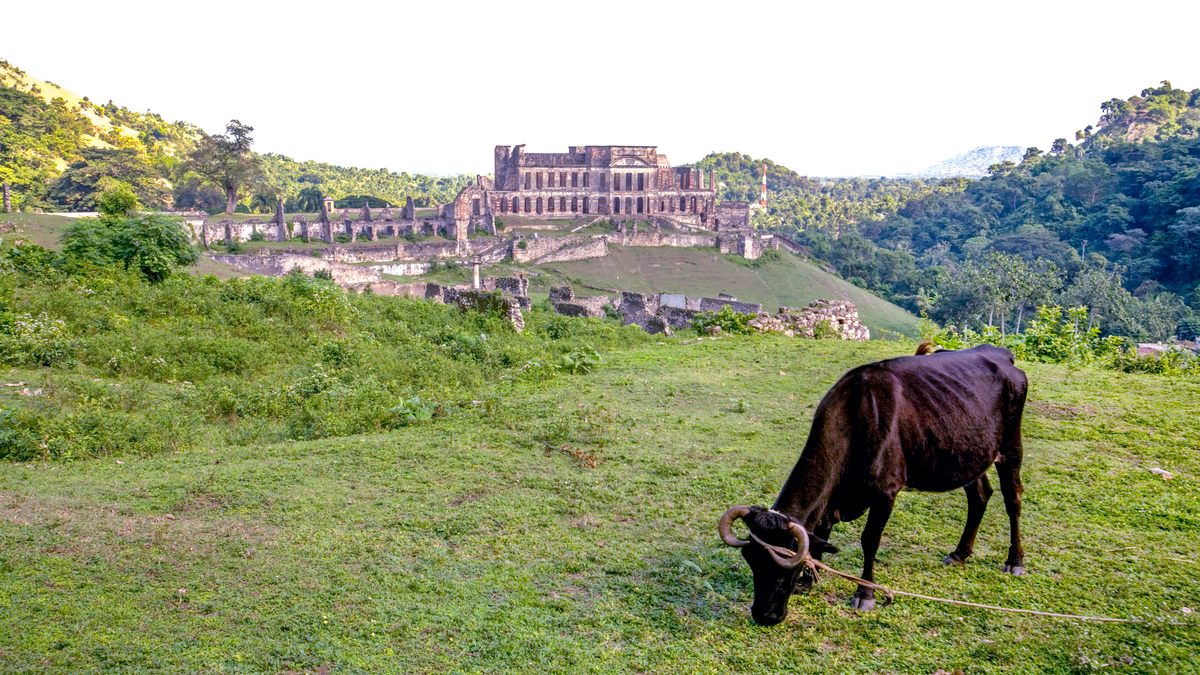
A few years ago, Florida Museum of Natural History zooarchaeologist Nicolas Delsol, studying the Spanish introduction of cattle to the Americas, turned to the bits of bone and tooth in the Puerto Real collection. He extracted genetic material from several of the fragments labeled as cow teeth. Because of their age and Hispaniola’s hot, humid environment, he knew it was unlikely that any nuclear DNA, an organism’s full genetic blueprint, had survived. “As soon as the organism dies, the DNA starts to degrade, especially in really hot areas,” he says. “It doesn’t preserve well.”
So Delsol concentrated on mitochondrial DNA, or mtDNA, inherited from an organism’s mother and stored outside the cell’s nucleus. Generally speaking, mtDNA is easier to access and more plentiful than DNA. Its complete length, called a mitogenome, is also much shorter than a full genome—which makes it easier to read and cheaper to sequence. While mtDNA preserves only the matrilineal side of an individual’s origin story, Delsol says, “We aimed at what we could get, and it gives a lot of information about the ancestry of an organism.”
The results were surprising. “Comparing sequences on my computer, I thought, wait, this doesn’t look right,” Delsol says. “This isn’t cow DNA.”
After further analysis, he realized one of the fragments came from a partial horse tooth mistakenly labeled as that of a cow. He was finishing his thesis on cattle—“I was really focused on my cows,” he says—so Delsol set the data aside.

Aware that it was the oldest genetic material from a domestic horse in the Americas, and that it might have secrets of its own to reveal, he eventually took another look at the horse mitogenome. Comparing it with a recently published database of modern horse mitogenomes from around the world, he made a second unexpected discovery: The horse most closely related to the 16th-century Puerto Real horse was something called a Chincoteague pony.
“Chincoteague pony didn’t ring a bell because I’m from France,” says Delsol. “I thought, ok, I don’t know that breed. What are these? Where do they come from?”
As word spread of the unexpected genetic link he’d found, Delsol quickly learned that the Chincoteague ponies occupy a special place in the hearts of many Americans who’d read about them in a children’s book. “So many people told me it was a very significant read when they were young,” Delsol says. “I learned a lot about American culture.”
He also discovered that no one knew how the Chincoteague ponies ended up on the Atlantic barrier island of Assateague, which straddles Maryland and Virginia. Although named for the island of Chincoteague, just to its west, the feral ponies have roamed Assateague Island for hundreds of years. Exactly for how long, however—and where they came from—remains a mystery.
First published in 1947, Marguerite Henry’s novel Misty of Chincoteague focused on the bond between a pony and two children, but it also took local lore about the animals nationwide. The book embraced the legend that the feral ponies of Assateague were the descendants of Spanish horses that had survived a shipwreck centuries earlier. Henry’s novel became a classic and was eventually made into a movie, perpetuating the romantic idea of four-legged shipwreck survivors roaming free on a narrow, 37-mile-long slice of sand, wildflowers, and loblolly pine.
However, until Delsol’s recent discovery, the heartwarming tale had no hard evidence to support it. The Spanish shipwreck story had been circulating along the Delmarva Peninsula long before Henry put pen to paper, but so, too, had an alternate version of the Assateague herd’s origins: The animals descended from horses kept on the barrier island by English settlers. According to this version, despite horses being extremely valuable, their owners abandoned them there at some point. Believers of this English origin pointed to one big problem they saw in the competing shipwreck story: No one had ever found a Spanish wreck in the waters around Assateague.
But then, someone did. Sort of. Written records indicate that at least two Spanish Royal Navy ships sank in the area: La Galga, a warship sailing from Havana to Spain in 1750, and the frigate Juno in 1802. Treasure hunters and local farmers alike have found artifacts, such as Spanish coins and even a rusted anchor, but the exact location of either ship has not been conclusively established. One offshore wreck site is generally thought to be that of Juno, but La Galga, which ran aground in shallow waters close to shore, has never been found.
That’s not for lack of trying. Independent maritime historian John Amrhein Jr., author of The Hidden Galleon: The true story of a lost Spanish ship and the wild ponies of Assateague Island, has been hunting for La Galga since the early 1980s. He believes that he has identified the wreck’s location—not in the water but on Assateague itself, in what was once an inlet but is now high and dry thanks to the shifting topography of barrier islands.
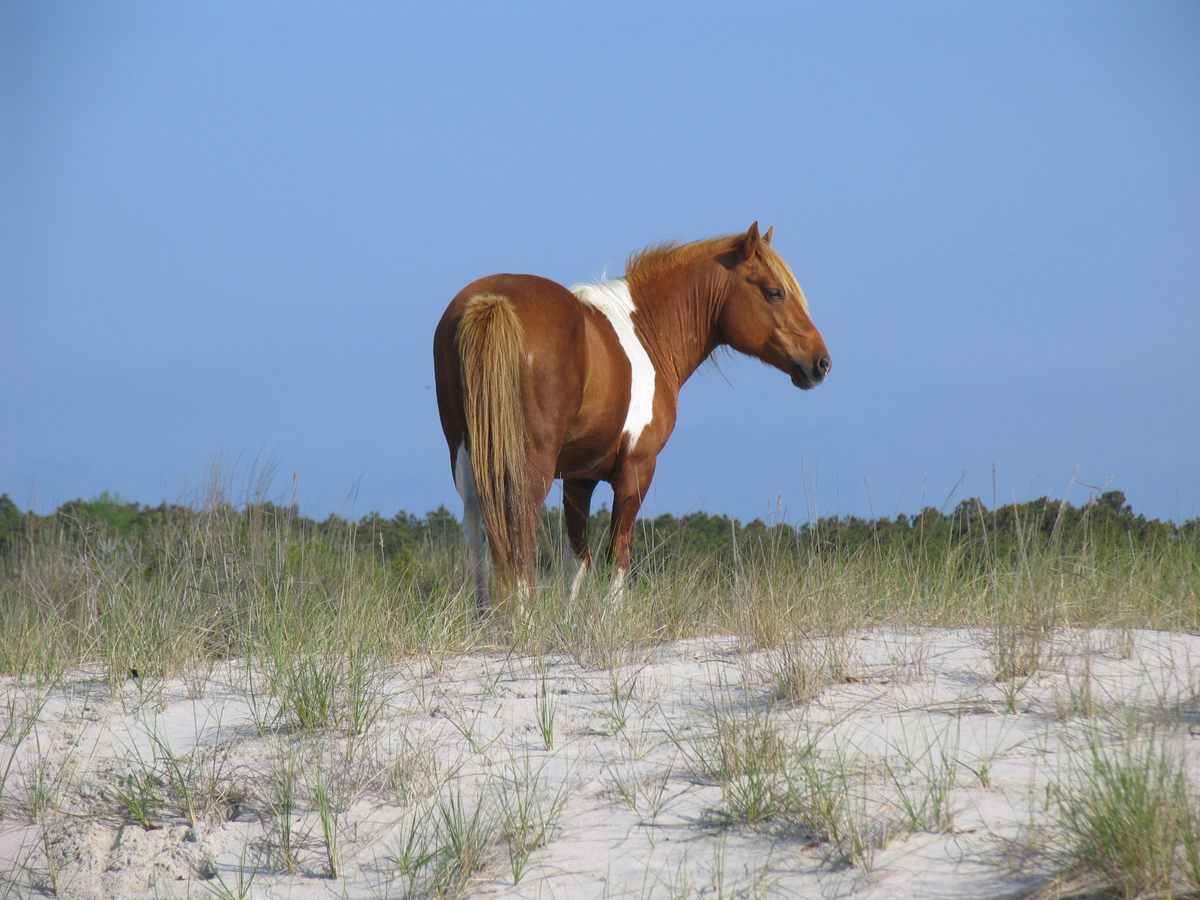
Historical records document that La Galga’s crew removed their belongings—without mention of any horses—and that locals later salvaged much of the wood and iron. But Amrhein believes the lower third of the hull, including stones and other material used for ballast, is still hidden beneath the sand, possibly along with evidence of four-legged passengers.
“You may find horseshoes, tack, or horse dung,” Amrhein says. “That could happen. That’s just a possibility. I hope there is something that proves the horses were aboard.”
Amrhein has conducted numerous surveys around the federally owned area over the past four decades, but he has yet to secure permission to dig. It’s an issue he has some strong feelings about. Both the National Park Service and U.S. Fish and Wildlife Service, which manage different areas of the island, have long promoted the English origin theory in their public outreach.
“That is total bullshit. They want to discredit the shipwreck legend,” Amrhein says. “They’re trying to halt my archaeological investigation. They don’t want it to happen because if I find the wreck there will be a political controversy.”
Amrhein is one of several parties, including a commercial salvage company, the Commonwealth of Virginia, and the government of Spain, embroiled in or impacted by a long-running legal dispute about the wrecks of La Galga and Juno—even though neither ship has been found. “Treasure fever does crazy things to people,” says Amrhein.
In 1997, after the salvage company claimed to have found both ships—by producing a handful of coins and other artifacts that, says Amrhein, could have “come from any shipwreck”—the Spanish government asserted its ownership of the wrecks, which it had never formally abandoned. A court eventually ruled in favor of Spain, creating the unusual circumstance of a foreign government owning any artifacts found on U.S. federal lands. Amrhein says that to investigate further the site he has identified as “exactly where the ship is,” he’s been told he must acknowledge Spain owns the wreck and get permission from its government—two things he refuses to do.
Amrhein holds out hope that he’ll find La Galga, and potentially evidence that horses were aboard. He says Delsol’s research, published in July in the open-access journal PLOS One, “is going to be helpful for what I’m doing” as he continues to advocate for the ponies’ Spanish shipwreck origin story. Other reactions have been more guarded.
A statement about Delsol’s paper, emailed to Atlas Obscura by a representative of the Chincoteague Volunteer Fire Company, which owns the wild ponies, reads in part: “The findings are quite exciting and definitely lend value to the legend. However, as the primary caregivers of the herd, our concentration remains solely in that capacity.”
A representative of the U.S. Fish and Wildlife Service’s Chincoteague National Wildlife Refuge, on the Virginia side of Assateague Island, declined to comment. A National Park Service representative of the Assateague Island National Seashore, which spans both states, emailed a statement that reads in part: “While Assateague has no immediate plans to make significant changes to our outreach materials, park staff will continue to review the information from this recent genetic study and will share these findings with other scientists, historians, and visitors as appropriate.”
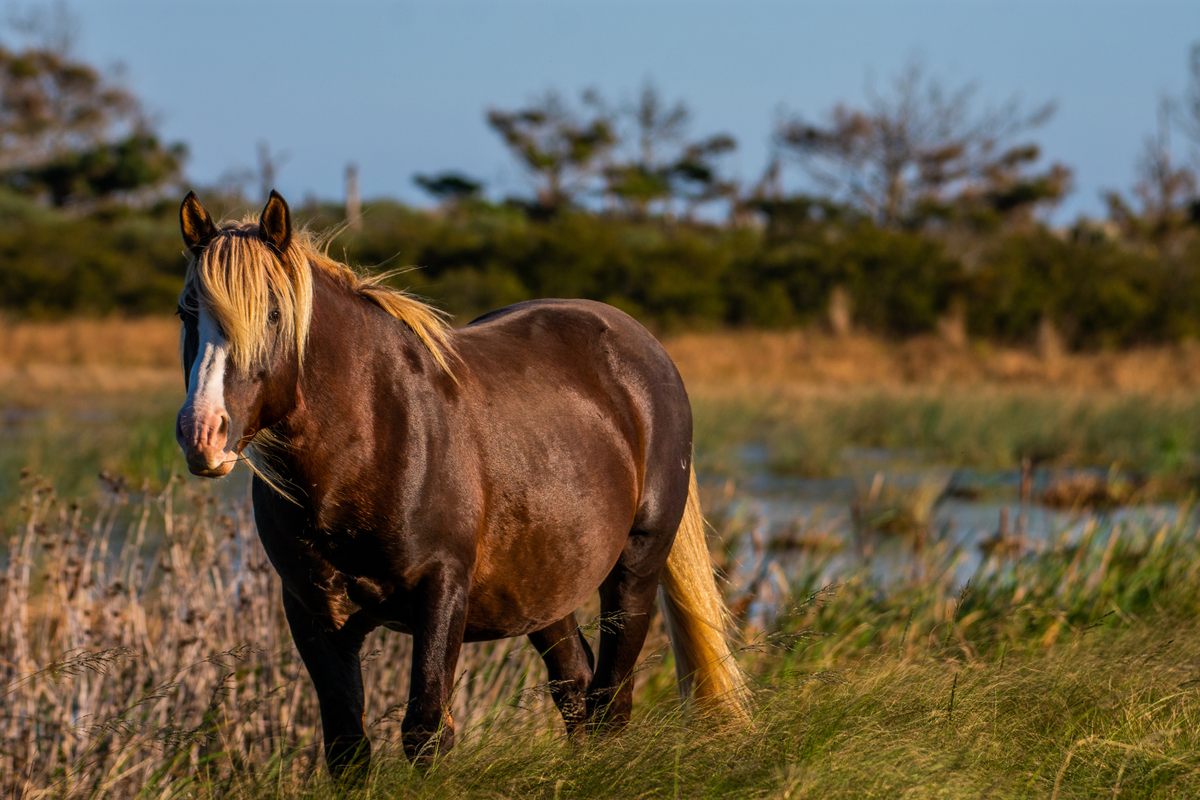
The National Park Service representative also sent, without elaboration, a copy of a 2005 report providing an initial genetic profile of ponies on Assateague. The report does not address the ponies’ origin and was intended as a conservation tool to better manage the modern population. Using decades-old methods, the 2005 report analyzed only a small portion of the animals’ mitogenome: about 500 base pairs, each pair essentially representing one rung of DNA’s ladder-like double helix. In contrast, Delsol’s research compared the Puerto Real horse’s complete mitogenome to those of more than 80 horses worldwide, each one 16,000 base pairs long.
“Using complete mitogenomes offers a much more accurate view,” says Delsol, who reviewed the 2005 report. He adds that having the Puerto Real horse’s full mitogenome—a first for a colonial-era horse—means he can place the animal on its family tree “with relatively high confidence.”
But the new research is far from conclusive proof that the Chincoteague ponies came from La Galga, or from any Spanish ship. The Puerto Real tooth, while significant as the oldest genetic material of its kind in the Americas, reveals the ancestry of just one-half of one animal. And Puerto Real, in its heyday, was full of pirates and other seafaring sorts who traveled far beyond the Caribbean. It’s possible, for example, that descendents of the Puerto Real horse found themselves sailing north with an English privateer looking to retire somewhere along the Atlantic Seaboard.
“Trade was trade,” says Deagan of Puerto Real’s freewheeling market. “They could have traded horses.”
There is no record of ponies on Assateague until well after the arrival of English colonizers in the 17th century. Given the value of horses for transport and labor, an established herd of wild ponies would not have escaped the settlers’ notice, says Amrhein. “They didn’t mention them. They would have mentioned them.”
But Delsol believes the ponies may provide a clue to an otherwise hidden chapter in colonial American history. “Was it a shipwreck? We cannot say. All we can say is that they are really closely related to Spanish horses from Hispaniola,” Delsol says. “The main Spanish explorations focused on the Caribbean and Mexico, but they were also present in the Mid-Atlantic. It’s highly plausible that the Spanish were around this area.”
Delsol continues to analyze the Puerto Real tooth, which is now part of a larger study of early domestic horses in the Americas. With a colleague, he is attempting to extract and sequence any remaining nuclear DNA from the specimen, as well as preserved chemical clues to the animal’s birthplace and other details, he says, “to clarify the history of these horses, to complete the story that we can tell.”
Extracting DNA, stripping away centuries of microbial contamination, and piecing together what has been lost to degradation in a tropical environment is difficult, time-consuming work, but Delsol hopes to have at least preliminary results within the next year. If his team is able to reconstruct the Puerto Real horse’s full story, it may settle, at last, the long-running debate over the lineage of the Chincoteague ponies. Or it may provide even more unexpected layers of mystery, leaving space for theories about the animals’ origins to roam freely, like ponies through tall grasses fringing a dune.
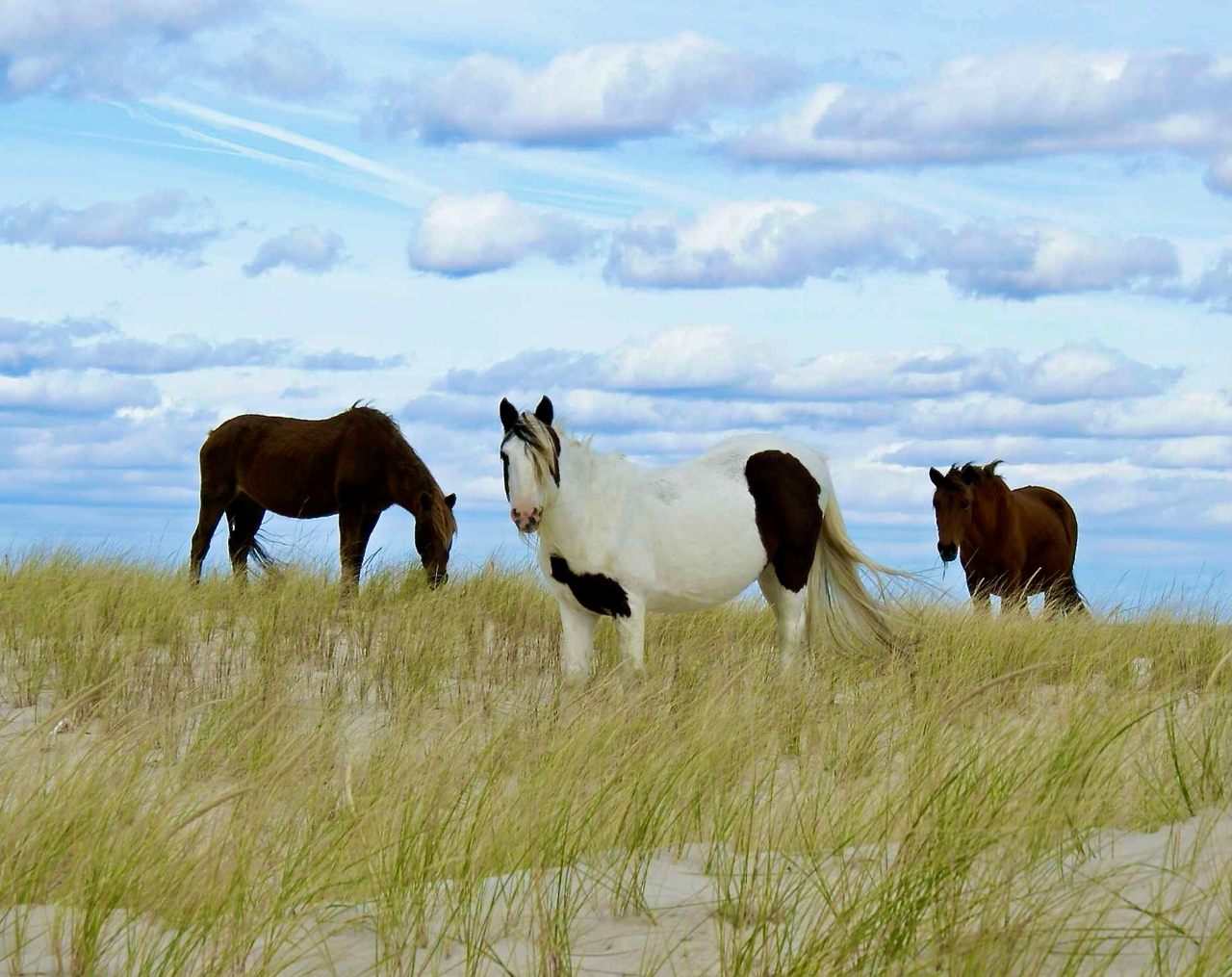




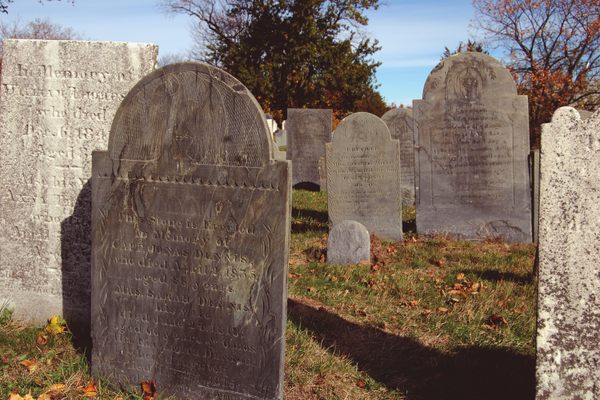
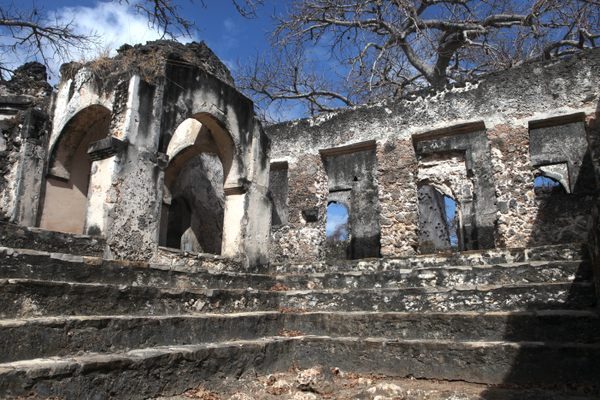
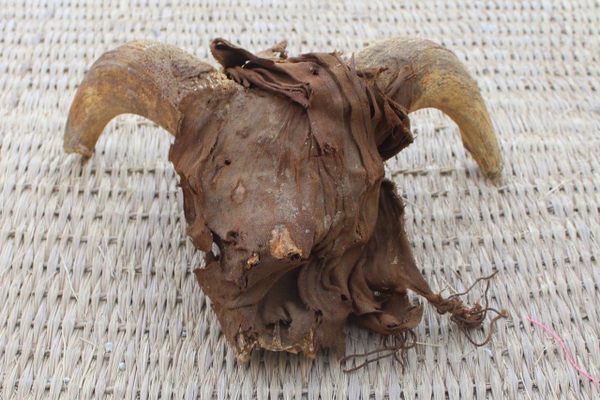


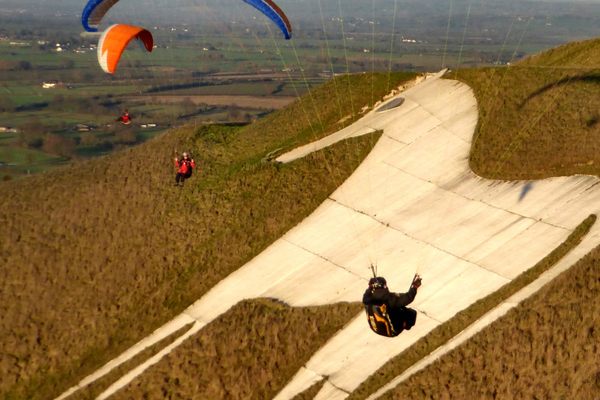



























Follow us on Twitter to get the latest on the world's hidden wonders.
Like us on Facebook to get the latest on the world's hidden wonders.
Follow us on Twitter Like us on Facebook